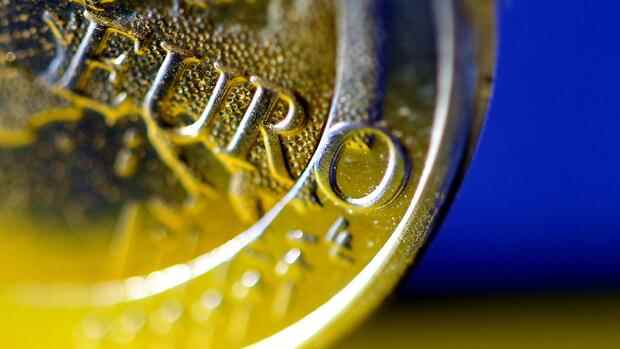Ironically, in times of war, Europe’s means of combating the economic crisis are largely exhausted.
(Photo: dpa)
It’s been ten years since the euro crisis reached its peak. Cyprus, Spain, Italy – one country after the other lost confidence in the financial markets. In the end, Mario Draghi, then head of the European Central Bank (ECB), was forced to utter his legendary sentence: He would “do everything necessary” to save the euro, whatever the cost.
The rescue operation was successful, the common currency survived. However, the euro crisis was never overcome. After all, all the structural problems that have been suppressed over the past ten years have survived with the euro. But now the currency area is heading for the point where the policy of delaying the problem no longer works without major side effects.
The ECB’s crisis policy has reached the end of its potential due to the high inflation, as has the financial policy in many euro countries due to the high level of debt. Ironically, in times of war, Europe’s means of combating the economic crisis are largely exhausted. A comeback of the euro crisis is likely.
All those who believed that debt had lost its terror because permanently low interest rates paved the way for a new debt policy were wrong. But this argument was never true, not only because inflation was high again.
Top jobs of the day
Find the best jobs now and
be notified by email.
The favorable financing conditions of the euro countries have always been an illusion as long as the ECB buys up a large part of the euro government debt and there is therefore no fair price for debt.
In any case, how much the ECB has wrapped the euro countries in cotton wool is revealed by the nervous activity that currently prevails in the European capitals and financial institutions, because the central bank is preparing to exit the loose monetary policy.
Italy’s Prime Minister Draghi is calling for new European protective shields, financed by additional European debt. The European bailout fund ESM also wants to put a new protective shield around the euro countries. And the ECB is tinkering with new purchase programs in case some countries get caught up in the scaling back of their current programs.
Weidmann was right: we got entangled
The fact that new bailout programs were immediately being discussed shows how right ex-Bundesbank boss Jens Weidmann was on one point: the longer the loose monetary policy lasts, and the more closely interwoven monetary and financial policies are, the more difficult it will be to exit.
The call for new rescue packages is therefore the wrong approach. Another rescue round helps to alleviate symptoms, but does not eliminate the cause of the ongoing crisis – a lack of structural reforms. And over the years, the European financial architecture has been supplemented by more and more aid programs. The motto was always the same: a lot helps a lot.
The corresponding funds, for example from the EU unemployment insurance or the EU reconstruction fund, have not even been called up. And should a country still run into problems, the ESM can help with cheap loans today.
If the euro area ever wants to return to economic normality, the euro states must regain the confidence of the financial markets. The days of politicians evading responsibility by relying on the ECB or simply shifting debt to the European level must be over.
More: “We will do what is necessary” – ECB Director Schnabel announces a turnaround in interest rates
